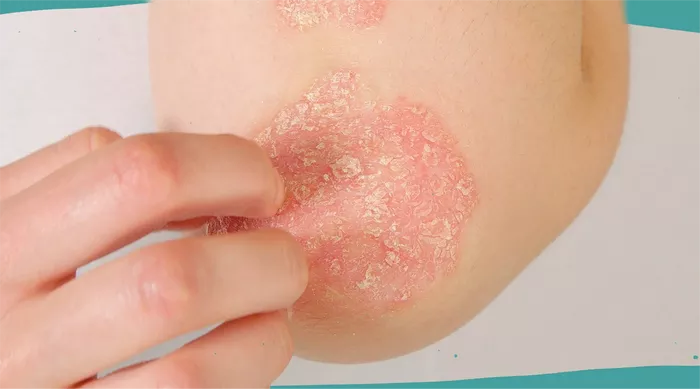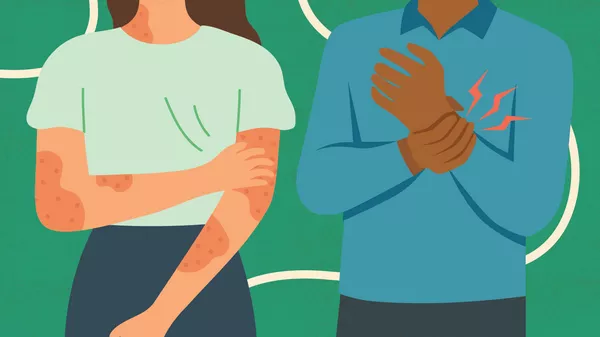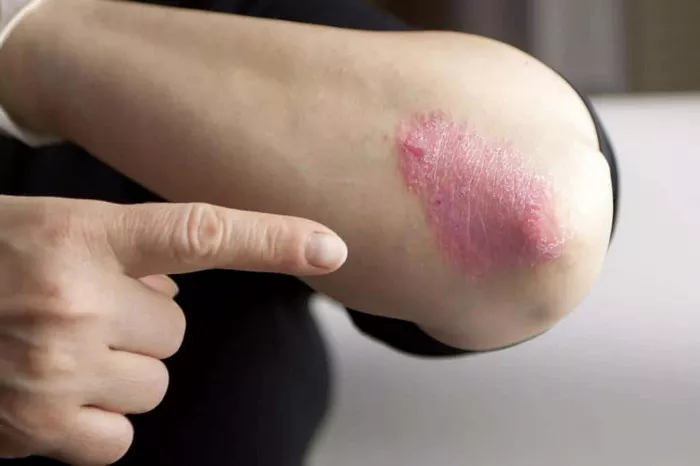Arthropathic psoriasis, also known as psoriatic arthritis, is a chronic inflammatory condition that affects both the skin and joints. Managing this multifaceted disease requires a comprehensive approach that addresses the complex interplay between dermatological and rheumatological symptoms. This article explores the various treatment strategies available, highlighting both conventional and emerging therapies.
Understanding Arthropathic Psoriasis
Arthropathic psoriasis is an autoimmune disease characterized by the co-occurrence of psoriasis and inflammatory arthritis. Psoriasis manifests as red, scaly patches on the skin, while the arthritic component causes pain, swelling, and stiffness in the joints. The prevalence of psoriatic arthritis among individuals with psoriasis ranges from 6% to 42%, reflecting significant variability due to genetic, environmental, and immunological factors.
Pathophysiology and Diagnosis
The pathogenesis of arthropathic psoriasis involves a complex interaction between genetic predisposition and environmental triggers, leading to immune system dysregulation. Key players in this process include T-cells, cytokines (such as TNF-alpha, IL-17, and IL-23), and other immune mediators that contribute to both skin and joint inflammation.
Diagnosing psoriatic arthritis can be challenging due to its clinical overlap with other forms of arthritis, such as rheumatoid arthritis and osteoarthritis. Accurate diagnosis typically involves a combination of clinical evaluation, imaging studies, and laboratory tests. The CASPAR (Classification Criteria for Psoriatic Arthritis) criteria are often used to aid diagnosis, requiring evidence of inflammatory articular disease with the presence of psoriasis, nail dystrophy, a family history of psoriasis, dactylitis, or juxta-articular new bone formation.
Treatment Goals and Strategy
The primary goals of treating arthropathic psoriasis are to reduce pain and inflammation, prevent joint damage, and improve quality of life. An effective treatment plan is usually multidisciplinary, involving dermatologists, rheumatologists, physical therapists, and sometimes, surgical specialists. Treatment strategies are tailored to the severity of the disease, patient preferences, and response to previous therapies.
Conventional Treatment Options
1. Nonsteroidal Anti-Inflammatory Drugs (NSAIDs)
NSAIDs are often the first line of treatment for mild to moderate psoriatic arthritis. These drugs help alleviate pain and reduce inflammation but do not halt disease progression. Common NSAIDs include ibuprofen, naproxen, and diclofenac. However, long-term use of NSAIDs can lead to gastrointestinal, renal, and cardiovascular side effects, necessitating careful monitoring.
2. Disease-Modifying Antirheumatic Drugs (DMARDs)
DMARDs are critical in managing moderate to severe psoriatic arthritis. These drugs not only reduce symptoms but also slow down joint damage. Traditional DMARDs include:
- Methotrexate: Often considered the gold standard for psoriatic arthritis, methotrexate can effectively control both skin and joint symptoms. However, it requires regular monitoring due to potential liver toxicity and bone marrow suppression.
- Sulfasalazine: This drug is particularly useful for peripheral arthritis and is generally well-tolerated, though it may cause gastrointestinal upset.
- Leflunomide: Effective in reducing both joint inflammation and skin lesions, leflunomide can be a good alternative for patients who cannot tolerate methotrexate.
Biologic Therapies
Biologic agents have revolutionized the treatment of psoriatic arthritis by specifically targeting key inflammatory pathways. These therapies are typically reserved for patients with moderate to severe disease who do not respond adequately to traditional DMARDs.
1. Tumor Necrosis Factor Inhibitors (TNFi)
TNF inhibitors are among the most widely used biologics for psoriatic arthritis. They include:
- Etanercept: A fusion protein that inhibits TNF-alpha, etanercept is effective in reducing both skin and joint symptoms.
- Infliximab: A monoclonal antibody administered intravenously, infliximab is highly effective but requires regular infusions.
- Adalimumab: Another monoclonal antibody, adalimumab is administered subcutaneously and has shown significant efficacy in clinical trials.
- Certolizumab Pegol: This PEGylated anti-TNF agent offers a unique option for patients, especially those who are pregnant or breastfeeding, due to its minimal placental transfer.
- Golimumab: A once-monthly subcutaneous injection, golimumab provides convenience and efficacy for long-term management.
2. Interleukin Inhibitors
Targeting interleukins involved in the inflammatory cascade offers another effective treatment strategy:
- IL-12/23 Inhibitors: Ustekinumab targets the p40 subunit shared by IL-12 and IL-23, providing significant improvement in both joint and skin symptoms.
- IL-17 Inhibitors: Secukinumab and ixekizumab target IL-17A, offering rapid and sustained relief from symptoms. Brodalumab, which targets the IL-17 receptor, also falls in this category.
- IL-23 Inhibitors: Guselkumab and risankizumab specifically inhibit the p19 subunit of IL-23, showing promise in controlling psoriatic arthritis.
Emerging Therapies
The landscape of psoriatic arthritis treatment is continually evolving, with several promising therapies under investigation.
1. Janus Kinase (JAK) Inhibitors
JAK inhibitors, such as tofacitinib and upadacitinib, interfere with the JAK-STAT signaling pathway, which is involved in the pathogenesis of psoriatic arthritis. These oral medications have shown efficacy in reducing joint and skin symptoms and offer an alternative for patients who do not respond to biologics.
2. Phosphodiesterase 4 (PDE4) Inhibitors
Apremilast, a PDE4 inhibitor, works by modulating intracellular cyclic AMP levels and has been approved for treating psoriatic arthritis. It offers the convenience of oral administration and a favorable safety profile, although its efficacy may be lower compared to some biologics.
3. Other Investigational Agents
Several other agents are in various stages of development, targeting novel pathways involved in the disease process. These include TYK2 inhibitors, such as deucravacitinib, and other small molecules that offer the potential for more targeted and effective treatments.
Non-Pharmacological Interventions
In addition to pharmacotherapy, non-pharmacological interventions play a crucial role in managing arthropathic psoriasis.
1. Physical and Occupational Therapy
Physical therapy helps maintain joint function, improve range of motion, and reduce pain through tailored exercise programs. Occupational therapy provides strategies to manage daily activities and maintain independence, especially for patients with significant joint involvement.
2. Lifestyle Modifications
Patients are encouraged to adopt a healthy lifestyle, including regular exercise, a balanced diet, and smoking cessation. Weight management is particularly important as obesity can exacerbate both psoriasis and psoriatic arthritis.
3. Psychosocial Support
Chronic illnesses like psoriatic arthritis can significantly impact mental health. Counseling and support groups can provide emotional support and coping strategies for patients dealing with the physical and psychological burden of the disease.
Integrative and Alternative Therapies
Some patients explore integrative approaches to complement conventional treatments. These may include dietary supplements, acupuncture, and stress-reduction techniques such as yoga and meditation. While evidence for these therapies is varied, they can provide additional relief for some individuals when used in conjunction with standard treatments.
Personalized Medicine
The future of psoriatic arthritis treatment lies in personalized medicine, which tailors therapies based on individual patient characteristics, genetic profiles, and disease phenotypes. Advances in genomics and biomarkers are paving the way for more precise and effective treatment strategies, minimizing trial and error in medication selection.
Conclusion
Managing arthropathic psoriasis requires a multifaceted approach that combines pharmacological and non-pharmacological interventions. With a growing arsenal of treatment options, healthcare providers can tailor therapies to individual patient needs, improving outcomes and quality of life. Ongoing research and emerging therapies hold promise for even more effective and personalized care in the future.
Key Takeaways
- Comprehensive Management: Effective treatment of arthropathic psoriasis involves a combination of dermatological and rheumatological care.
- Pharmacotherapy: Includes NSAIDs, DMARDs, and biologics, with emerging therapies like JAK inhibitors and PDE4 inhibitors showing promise.
- Non-Pharmacological Interventions: Physical therapy, lifestyle modifications, and psychosocial support are crucial components of comprehensive care.
- Personalized Medicine: Advances in genomics and biomarkers are paving the way for tailored treatment strategies.
By staying informed about the latest developments and maintaining a holistic approach to care, healthcare providers can significantly improve the lives of patients with arthropathic psoriasis.
Related Topics:

























